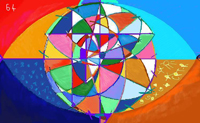Speaker
Dr
Andrzej Kupsc
(Uppsala University)
Description
Patterns of isospin violation and tests of conservation of the fundamental C, P and CP symmetries are the key physics issues in studies of pi0 , eta and eta ′ decays. The tests of the fundamental symmetries include searches for rare or forbidden decays and searches for asymmetries among the decay products in the not–so–rare decays. Some examples of the searches for the rare decays are eta-> 2pi, eta->4pi0 (CP tests), decays into odd number of photons (e.g. pi0 , eta-> 3g) and decay eta->pi0 e+ e− (C tests). In conversion
decay eta->pi+ pi − e+ e− the asymmetry in the distribution of the angle between the pions and electron decay planes allows to search for CP violation in a flavor-conserving process beyond the CKM mechanism which is not constrained by the limits on the neutron dipole moment.
In addition the Dalitz decays and the decays into lepton-antilepton pair are sensitive for a contribution from a boson responsible for annihilation of hypothetical light dark matter particles. The precise knowledge of the transition form factors of the π 0 and η mesons are also needed for the calculations of the Standard Model contributions to the muon g − 2 and to the rare pi0 and eta decays into a lepton-antilepton pair. The muon g − 2 and the branching ratio for pi0-> e+ e− decay are currently the observables where hints of a deviation from the
Standard Model predictions are reported.
The experimental studies of pi0 , eta and eta′ meson decays are carried out at four European accelerator research facilities: KLOE/KLOE-2 at DAFNE (Frascati), Crystal Ball at MAMI (Mainz), WASA at COSY (Julich), Crystal Barrel at ELSA (Bonn).
Author
Dr
Andrzej Kupsc
(Uppsala University)

